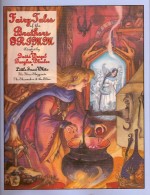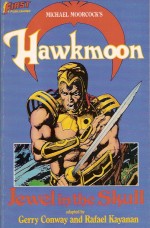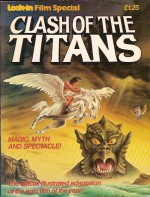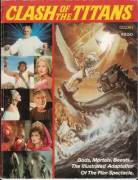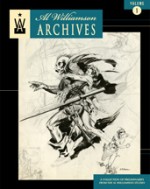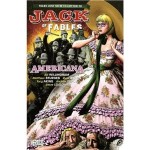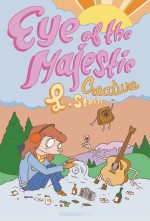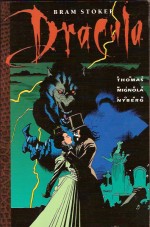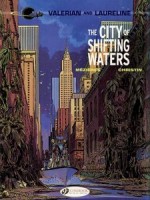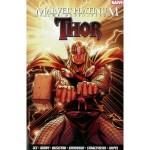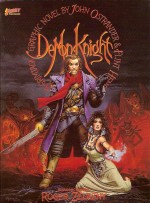
By John Ostrander & Flint Henry with an introduction by Roger Zelazny (First Publishing)
ISBN: 978-0-91541-970-8
Grimjack originally appeared during the American comic industry’s last great flourishing in the 1980’s. Created by playwright John Ostrander and Young Turk Tim Truman as a back-up feature for Mike Grell’s Starslayer, the series ran in issues #10-18 before graduating to its own title at First Comics. It almost survived the company’s demise more than a decade later. In a crowded marketplace, and almost irrespective of who was doing the drawing, this hard-boiled-detective/fantasy action strip was a watchword for quality entertainment.
The ’80s were a fantastic time for comics creators and consumers. It was like an entire new industry opening up within the original, moribund mainstream; the proliferation of the Direct Sales market and dedicated specialist retail outlets allowed new companies to start experimenting with format and content, whilst punters had a bit of spare cash to play with. Moreover much of the “kid’s stuff†stigma had finally dissipated – the country was catching up to the rest of the world in acknowledging that sequential narrative might just be an actual art-form…
Consequently many new companies began competing for the attention and cash of punters who had grown accustomed – or resigned – to getting their four-colour kicks from DC, Marvel Archie and/or Harvey Comics. European and Japanese material had been slowly creeping in but by 1983 a host of young companies such as WaRP Graphics, Pacific, Eclipse, Capital, Now, Comico, Dark Horse and First among others had established themselves and were making impressive inroads into traditional markets.
New talent, established stars and fresh ideas all found a thriving forum to try something a little different both in terms of content and format. Chicago-based First Comics was an early frontrunner, with Frank Brunner’s Warp, Starslayer and Jon Sable from Mike Grell and Howard Chaykin’s iconic American Flagg!, as well as an impressive line of comicbooks targeting a more sophisticated audience.
In 1984 they followed Marvel and DC’s lead with a line of impressive, European-styled over-sized graphic albums featuring new, out-of-the-ordinary comics sagas (see Time2, Time Beavers, Mazinger or Beowulf to see just how bold, broad and innovative the material could be)…
John Gaunt is a perpetually reincarnating warrior-mercenary calling himself Grimjack: a combination private eye, Ronin and problem-solver-of-last-resort, just scratching out a living in the fantastic pan-dimensional city of Cynosure. This incalculably vast metropolis intersects with every place in the multiverse at one time or another and the strangest of the strange inhabit its core regions.
All manner of beings constantly rub shoulders (if they have them) with gods, monsters, robots and things less quantifiable in a cruelly capitalistic commercial wonderland where the laws of physics can change from house to house but the law of supply and demand is utterly inviolable…
In his long lives Gaunt has been many things, but first and foremost he is a hero of the Demon Wars – a period in Cynosure’s history when the city overlapped the assorted regions of Hell and unspeakably vile devils from a host of infernos ran amok in the metropolis until the valiant Demon Knights drove them off forever.
Now, in this all-new tale, Gaunt is hired by the Office of the Chronost-Marshall to find who has interfered with the city’s chronology, unleashing a devastating time-storm. Surly, rebellious and unpleasant, Gaunt is still the only operative tough and crazy enough to brave the fourth dimensional vortex and shut down the maelstrom. Unfortunately, he never reckoned on stumbling into his own tragic past and meeting again his one true love…
As the Demon Wars reached their crescendo long ago a sorely wounded John Gaunt stumbled into a paradise dimension named Pdwyr and found brief bliss with the glorious, pacifist princess Rhian, before his companion Major Lash betrayed the entire race to the infernal hordes and watched their paradise become a last bastion of Hell…
Now Gaunt has arrived in Pdwyr once more – just after his earlier self departed – and faces the ultimate temptation: changing history to save the only woman he ever loved and the only place he ever felt at peace, or letting events unfold again in all their horrific predestined brutality…
Whatever he decides will be wrong…
The combination of cynical dry wit, mordant, bitter-edged fantasy and spectacularly imaginative action made Grimjack one of the best series of the era and the ghastly human tragedy of this epic aside is a treat no comics fan should miss. Moreover, this graphic narrative, beautifully illustrated by Flint Henry and colourist Martin Thomas, is designed with new readers in mind so there’s no reason for anyone to avoid a brutally magical encounter with a genuine original of the genre(s)…
© 1989 First Publishing, Inc. All Rights Reserved.

